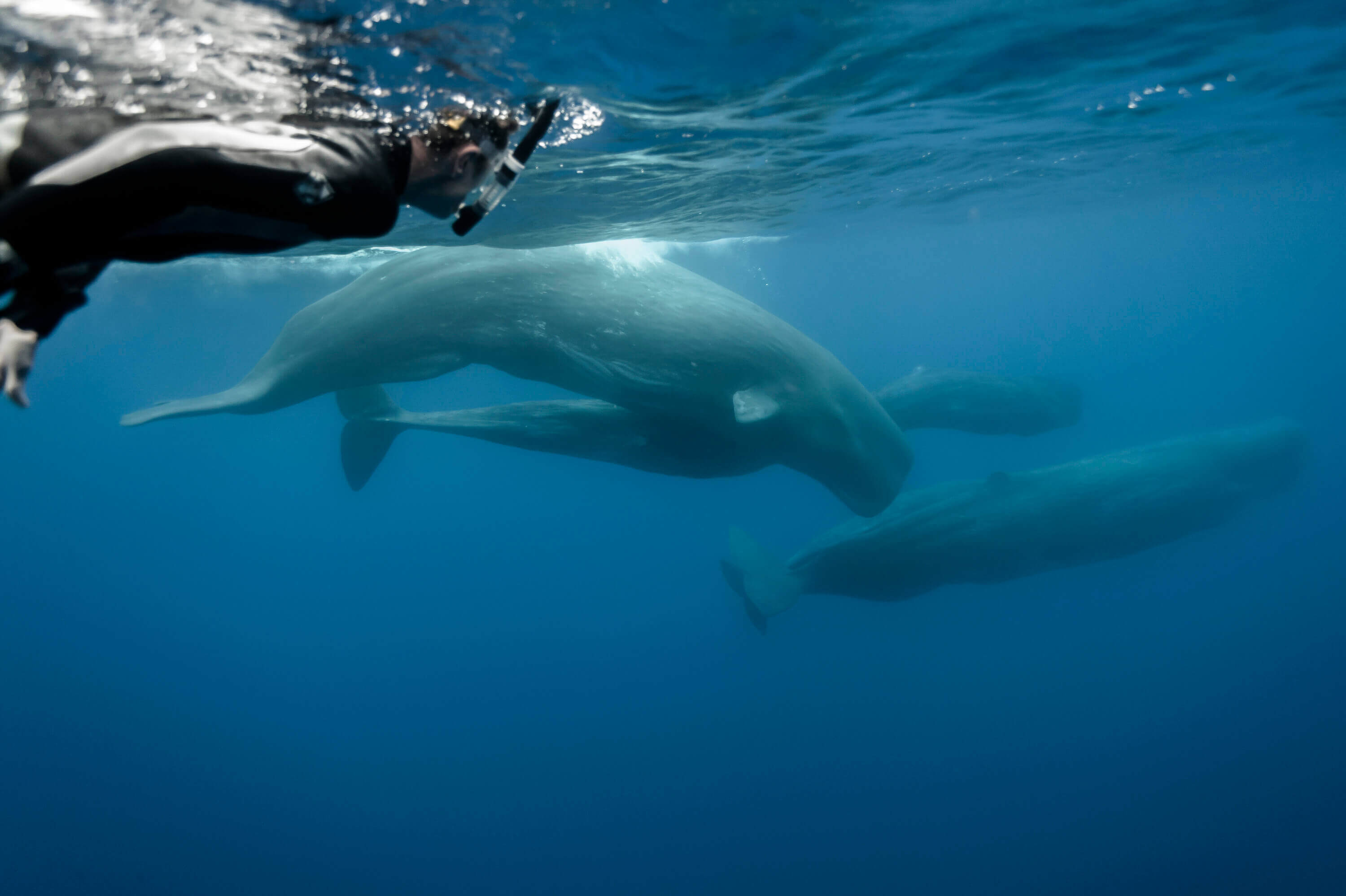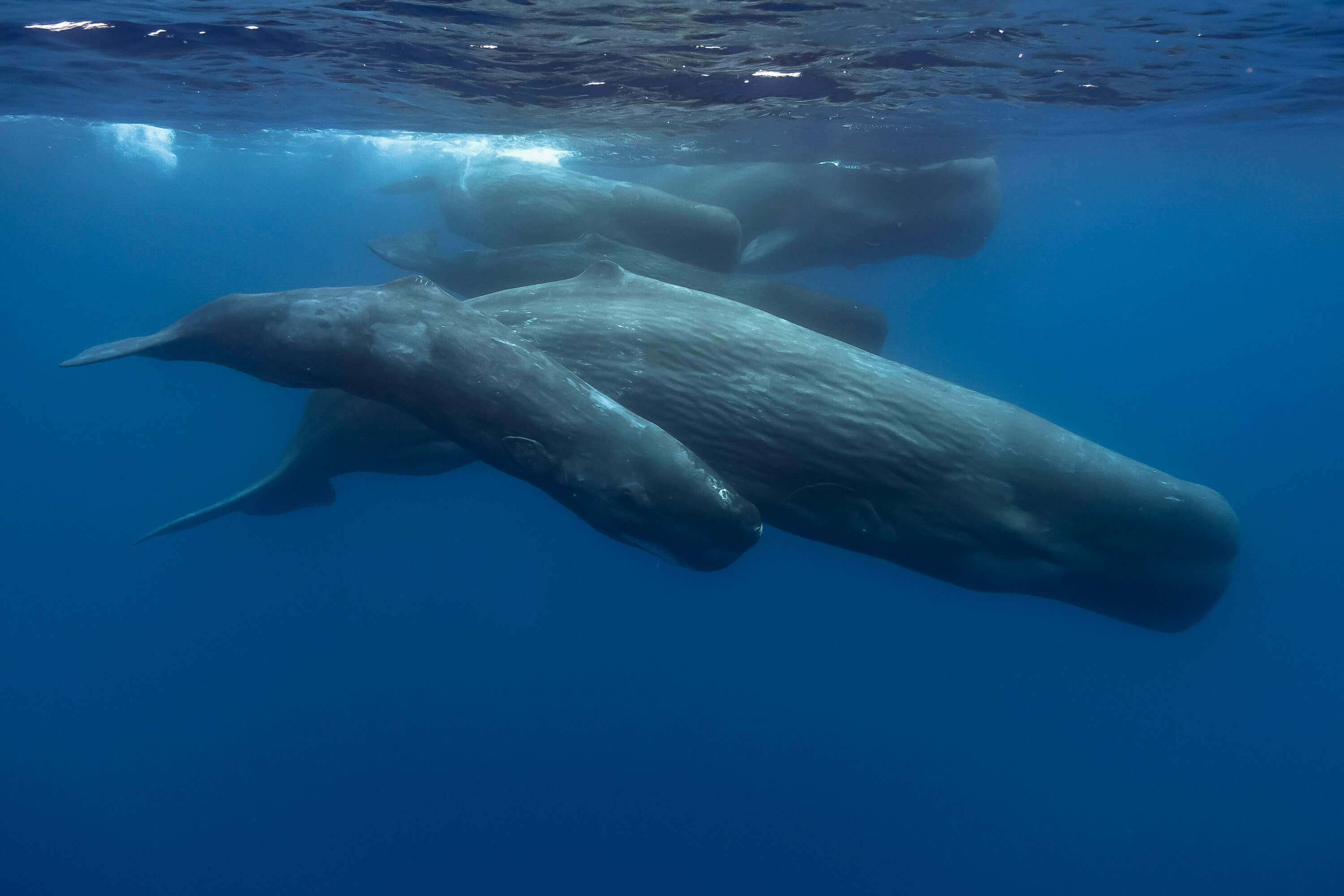“Travelling is pointless. If you’ve got nothing on the inside, you’ll never find anything on the outside. There’s no use going to the world to seek what you can’t find inside yourself”, said the wise old man to Tiziano Terzani in Un altro giro di giostra. Arriving in the Azores in bad weather can be quite grim even, if you’re not prepared to accept the power of these volcanic islands situated in the middle of the Atlantic Ocean, halfway between America and Europe. One thing is sure though: if you’ve got something inside you, if you’re not afraid of the solitude and primordial silence of these islands, the Azores stop being just a place, but soon become a state of mind.
Happy People in Tears is the title of the famous novel by João De Melo, native of the island of São Miguel, and it sums up the temperament of the Azore islanders well. I’ll never forget the people I met on my travels to the Azores, and their 28th parallel kindness. Serafino, a simple fisherman who took me to see the Tourada à corda, a sort of traditional bullfight, at Pico da Urze on the island of Terceira; or the surly waitress at the Clube Nautico in Angra do Heroismo; or Erminio, an Italian, naturalized Azorean, who has lived on his wooden boat in the port of Horta on the island of Fajal for many years; or lastly Vincente, an old former fighter in Angola and his wild mint tea. Nevertheless, we know that the first inhabitants of these islands “scattered arbitrarily in the ocean” were not human beings. Countless whales, which Antonio Tabucchi considered “not animals, but metaphors”, populate the archipelago’s waters, as well as its signs, mosaics, souvenirs and sometimes even votive images. Besides, as Melville wrote in Moby Dick, if our world is to again be flooded, the whale will still survive, crossing the seas, spouting its defiance to the skies. If I think of the Azores, I think of Philip Hoare, the writer from Southampton and his memorable words on the history of this people and their bond with these supreme “metaphysical” animals. When I asked Philip what his most indelible memory of the Azores was, he told me about his first encounter with a whale. “Her clicks were moving through my body. The huge distance between us suddenly shortened. It was a communion. I still cannot believe it. She swam into my head and never left it. She is still there, in my dreams.”
Hoare says that whales were here even before the islands came into existence and continue to frequent this continually changing place. I wonder if there is a geological or geographical reason for this. “The sperm whales in particular call this archipelago home. The profoundly deep waters, which provide no golden sandy beaches for human tourists, are a solace and a resource to them. Last time I was there, I used a hydrophone to record a male sperm whale’s hunting clicks for 1 hour 47 minutes – the longest such a sound has been recorded there. The clicks were steady as I heard him searching for food. Then they accelerated as he found his prey. And suddenly went silent as he caught it. Home to a whale is other whales. These are animals which live as collective individuals. They are connected by a world of sound. I imagine their clicks bouncing off those drowned volcanoes. It must be the sound of safety and home to them. They were hunted there for a century. But that is just a blink of the eye in their long evolutionary history. Their culture is matriarchal. It abides down the generations. It far outspans our own.”
Commercially speaking, whales were the heart of the economy of these islands until whale hunting was made illegal in 1986. There are lots of stories of old “retired” whale hunters who have lost their jobs. One ended up in a little known but melancholically beautiful novel, Il Baleniere delle montagne [The Whale Hunter of the Mountains] by Romana Petri, which tells the story of an old whale hunter from the island of Flores, the most archaic and uninhabited of the islands together with the tiny Corvo.
Today it’s said that this activity has been successfully replaced by whale watching. The old Azorean whale hunters maintain that the whales are totally indifferent to human presence even during reproduction. They might be, but I find the concept of ecotourism vaguely hypocritical. “I too am conflicted by the way whale watching has replaced whale hunting. We are still pursuing them. What we observe we destroy. And yet we must bear witness to the whales, to what we have done. I only dive with the whales of the Azores by special licence from the Azorean government. Together with the photographer, Andrew Sutton, I have had the chance to close what the art critic John Berger calls ‘the narrow abyss of miscomprehension’ between ourselves and the natural world. I bring back stories of their beauty. I feel I am a conduit between them and our world. Thus, when we saw this sub-adult female there on our last visit, all but pirouetting in the water, I knew it was impossible to believe that she was not aware of her own beauty. Her remarkable markings were the whale’s equivalent of haute couture. She is an individual, a non-human person, a being, suspended there under the sun’s rays, under what Melville called ‘the ocean’s skin’. Then she turned on her back beneath me so that she could see me stereoscopically. She was trying to describe me just as I was trying to describe her.
Whale watching allows us to make those reconnections. It certainly affects the whales, and I worry that it disturbs their feeding and their socializing. It certainly does so where it goes unregulated and unrestrained. But like the whales, we human mammals have an intense curiosity, and that can be a force for good.
After all, it was the recording of humpback whale song back in the 1960s that alerted us to their culture, and changed the way we looked at them, forever.”
I’ve been to the Azores twice. The first time on land, the second by sea. The first time I explored them on foot, alone. The second in a sailing boat, with friends and children of all ages, including my daughter who was just a year old. When I wandered around the islands the first time, I had no plans and I was full of energy; the second trip started in Fajal, ten days after my mother died. As we sailed between one island and the next we saw a lot of whales, including a sperm whale very close-up. Each time I thought it was my mother appearing and coming to say hello and I cried. You can find the Azore Islands incredible for various reasons, one of which is the fact that they are all very different from each other, including their landing places. Fajal is like a great mother who embraces you with her colourful bay. São Jorge greets you with a plain red and white striped lighthouse. Flores has a tiny and very much unprotected harbour. I haven’t been to Corvo, but I’ve read As ilhas desconhecidas [The Unknown Islands] by Raul Brandão. In 1926 the writer arrived in Corvo, the smallest and most remote of the Azores, after ten or so days on a ferry. Brandão was overwhelmed by the harshness of the place, by the light, the silence: “In the world Corvo is of no importance, but never have I felt the reality and weight of Time as I have here.”
This is where the whole sense of these islands lies, “mountains
of fire, wind and solitude”, as one of the first Portuguese explorers called them in the sixteenth century. Here you are out of this world, but everything is amplified. “Time is suspended on islands because they exist independently of our continental constraints. They float free – like the whales. Melville’s Moby Dick moves through time and space, like an extraterrestrial. He is able to be in more than one place in time. Perhaps the Azores can do the same. Time seems both fluid and frozen there, as if the same thing is happening all the time, but is different all the time. It is after all where the Mary Celeste was found, empty and mysteriously abandoned [Editor’s note: The Mary Celeste was a Canadian sailing ship whose crew vanished in 1872, the classic example of a phantom ship].
When I first went there, the islands’ blackness, and their isolation, scared me. I felt all the ocean around me, lost from Europe and America, the waves rolling at the basalt shores, the lava only just stilled. The Cory’s shearwaters flew overhead in the dark sky, calling like the lost souls of drowned sailors. They were known as whale birds, because of their association with the sperm whales. There are so many lost connections remade there, in the natural world’s image. It is a humbling notion to know such places, and such animals still exist, despite all we have done to them. Yet the whales abide, watching, waiting… We have lots to learn from these animals, from their togetherness, communicating over tens of miles, how they are always together, even when far apart.
‘What seest thou, in the dark backwards abyss of time?’ says Prospero, the magician in The Tempest. The islands have allowed me to see across that abyss, through their deep waters.” Perhaps when the wise old man told Terzani that there is no point travelling if you don’t have anything inside you, he might not have been thinking of a tête-à-tête with a whale.
If whales evolved long before humans then it seems fitting that they should still haunt these protean islands. The whales were here before the islands; and the islanders have lived off whales ever since the Americans came here in the mid-eighteenth century, sailing on the trade winds. Many ships – among them, the Charles W. Morgan – anchored in these waters, taking on fresh food and fresh crews. In turn, Azoreans worked their passage on a ‘bridge of whale-ships’ to the New World, as the same prevailing winds bypassed the islands on the voyage home, stranding Azoreans in America, where many made their homes; it has been calculated than half the population of the Massachusetts seaboard has Portuguese or Azorean blood. The islands themselves became architectural echoes of New Bedford and Nantucket, their narrow cobbled streets overlooked by rooftop lan-terns and clapboard; New England towns, only with palm trees.
Excerpt from The Whale: In Search of the Giants of the Sea by Philip Hoare (Ecco, HarperCollins Publishers, 2010).

